1. Potato Peels and Beet Tops
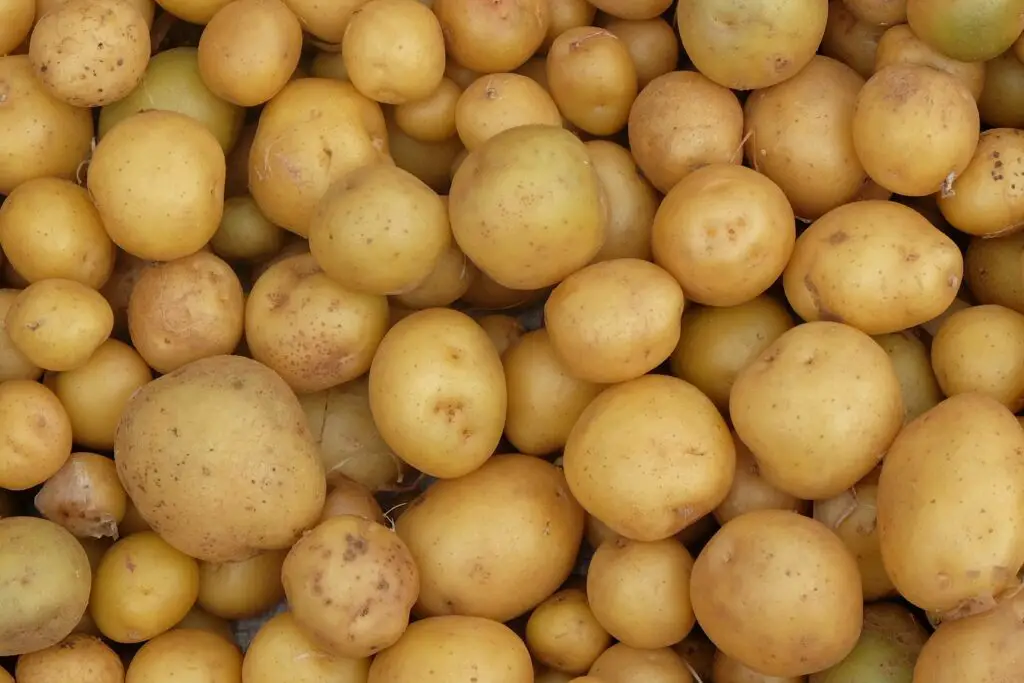
When food shortages hit hard during the war, even the most unappetizing scraps found their way onto dinner plates. Potato peels, which would normally go straight into the bin, were fried, boiled, or made into soup. Beet tops, those leafy greens we often toss without a second thought, became valuable additions to stews and casseroles. It wasn’t just about flavor, it was about getting as many nutrients as possible from every edible bit of produce shares Eater.
People grew used to eating what they had instead of what they wanted. Kids learned to love beet greens, even if it took a few dinners of grimacing through them. In some cases, these scraps were the only “vegetables” around. Hunger has a way of making things taste better, and during wartime, people were simply grateful to have something warm to eat. Peels and tops were cleaned, chopped, and served with pride. And surprisingly, some families found themselves sticking with these habits even after the war was over says AllRecipes.
2. Woolton Pie
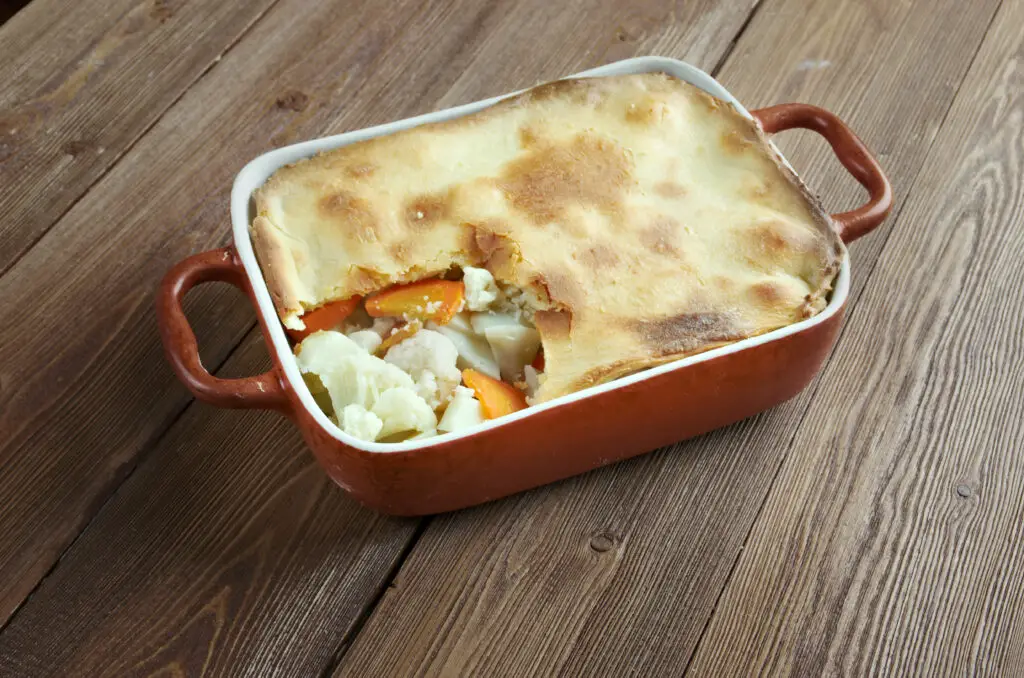
Woolton Pie sounds like it should be something rich and savory, but it was actually a meatless vegetable pie named after Lord Woolton, the British Minister of Food. It was made with whatever vegetables were available, like carrots, turnips, potatoes, and cauliflower, all chopped up and cooked into a filling. The topping was a simple crust made from whole wheat flour and margarine, since butter and lard were rationed. There wasn’t a trace of meat, but it was warm and filling shares Yahoo News UK.
Families would sometimes jazz it up with herbs, onions, or a dollop of whatever fat they could spare. It was often served during Sunday dinner to try and keep up a sense of tradition. While it didn’t taste like much, it offered comfort in its own way. Woolton Pie became a symbol of resilience, representing how people adapted to shortages. It was far from delicious, but it was a practical, hearty way to get through the week. Some older folks still remember it as the dish that got them through says Daily Express.
3. Spam With Everything

Spam may not have been everyone’s favorite, but during World War II, it became practically unavoidable. This canned meat product was shipped by the ton to both soldiers and civilians because it didn’t spoil and didn’t need refrigeration. People found countless ways to cook it—fried with onions, diced into stews, mashed with mustard for sandwiches, or even sliced and served as a sad little main course. Its salty, rubbery texture was less than ideal, but it was protein, and that mattered.
For many, Spam became a part of daily life whether they liked it or not. Kids grew up eating it and sometimes even came to enjoy it. Parents got creative trying to mask its flavor or dress it up for dinner. Some mixed it into scrambled eggs or made “Spam hash” with potatoes when they were lucky enough to have both. It was inexpensive, dependable, and easy to work with. And although it may not have been gourmet, it helped keep people going. To this day, it still has a nostalgic place in some hearts.
4. Carrot Marmalade

With sugar in short supply, sweet treats were rare, but people still craved them. Enter carrot marmalade, a strange but clever creation that used the natural sweetness of carrots to make a jam-like spread. Grated carrots were boiled down with a touch of sugar or honey—if you had it—and sometimes citrus peels or juice to mimic traditional marmalade. It was colorful and had a surprisingly pleasant texture, even if it didn’t exactly replace the real thing.
Families used it on toast, stirred it into porridge, or even baked it into simple cakes. Kids got excited at the sight of something vaguely dessert-like on the table. It felt like a luxury to have anything sweet at all. Mothers took pride in making something homemade and cheerful despite the bleak circumstances. Carrot marmalade wasn’t just food—it was a little gesture of love and normalcy. And for many, that meant more than flavor.
5. Mock Goose
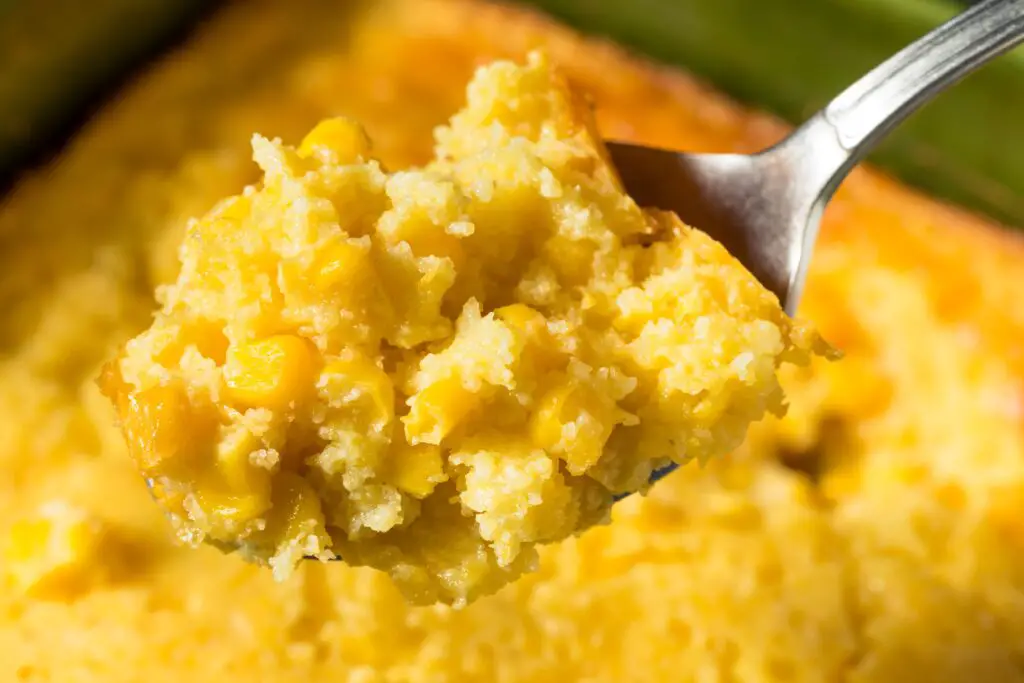
Mock Goose was one of those dishes that sounded much fancier than it really was. Instead of a succulent roast bird, it was usually made from lentils or beans, mashed potatoes, and breadcrumbs, all layered together and baked in the oven. People might throw in a bit of onion, sage, or leftover gravy to try to give it that Sunday roast flavor. It didn’t taste anything like goose, but it was hot and filling, and that was the main goal.
This dish was often served during special occasions or holidays when meat just wasn’t available. It helped families keep traditions alive, even if they had to stretch their imaginations. Some kids were disappointed by the lack of meat, but others grew to like the texture and crispiness of the baked top. It was a prime example of wartime creativity. While it wouldn’t win any culinary awards, it represented comfort and resourcefulness during tough times. And honestly, it wasn’t half bad with a bit of brown sauce.
6. Dandelion Greens and Nettle Soup
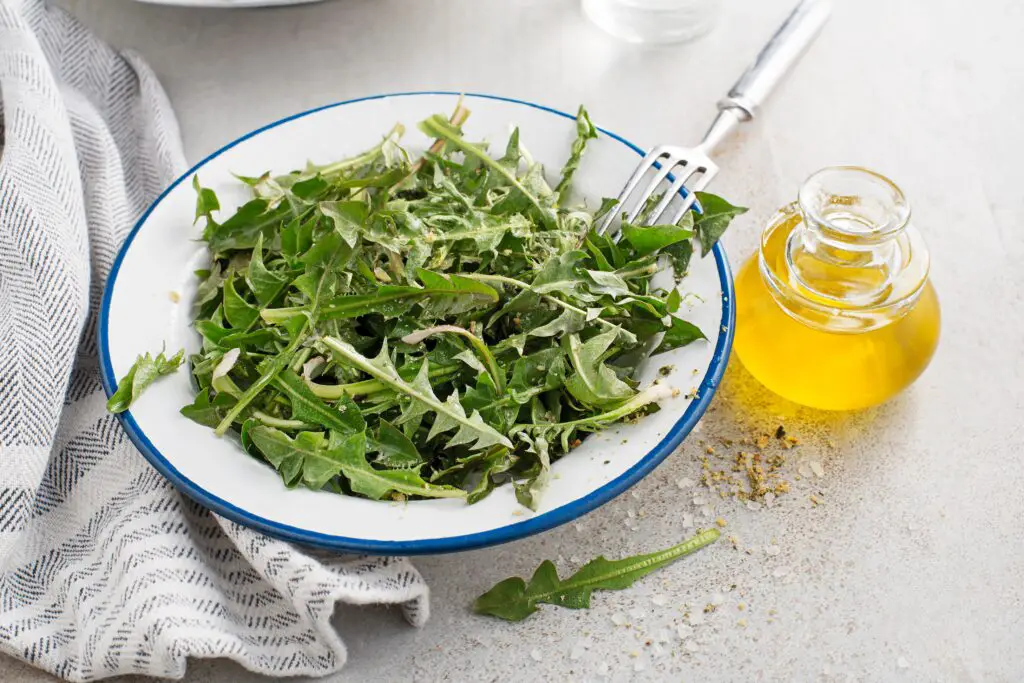
When money was tight and gardens weren’t producing enough, people turned to the fields and hedgerows for food. Dandelion greens and nettles were foraged, washed, and boiled into soups that were surprisingly nutritious. Nettles, once cooked, lost their sting and became tender and mild, while dandelion greens added a slightly bitter bite. Together, they formed a thin but warming broth that could be stretched to feed the whole family.
Some would add a potato, carrot, or even a piece of bone for flavor if they had it. The soup didn’t look particularly appetizing, but it was filling, and the vitamins helped keep people going. Foraging became a routine, with kids sent out in gloves to gather what they could. It was one of those meals that brought people closer to nature out of necessity. While not exactly a favorite, it helped many survive the toughest seasons. It’s a reminder that sometimes survival means getting very creative with what the earth provides.
7. Dripping on Toast

It sounds strange now, but back then, beef or pork fat—called dripping—was considered a treasure. After a roast, families would carefully collect the leftover fat and pour it into a jar to use throughout the week. Once it solidified, it was scooped onto bread like butter and served with a sprinkle of salt or even sugar. It was greasy, rich, and deeply satisfying, especially when food options were limited.
Kids often called it “bread and scrap,” and some actually came to enjoy it. It was one of the few sources of fat available during rationing. Adults appreciated the calories and flavor, even if it wasn’t exactly gourmet. It was filling and helped tide people over between meager meals. Plus, nothing was wasted, which became a point of pride. It might seem unappetizing now, but at the time, it was a small comfort on a very lean table.
8. Banana Substitute from Parsnips
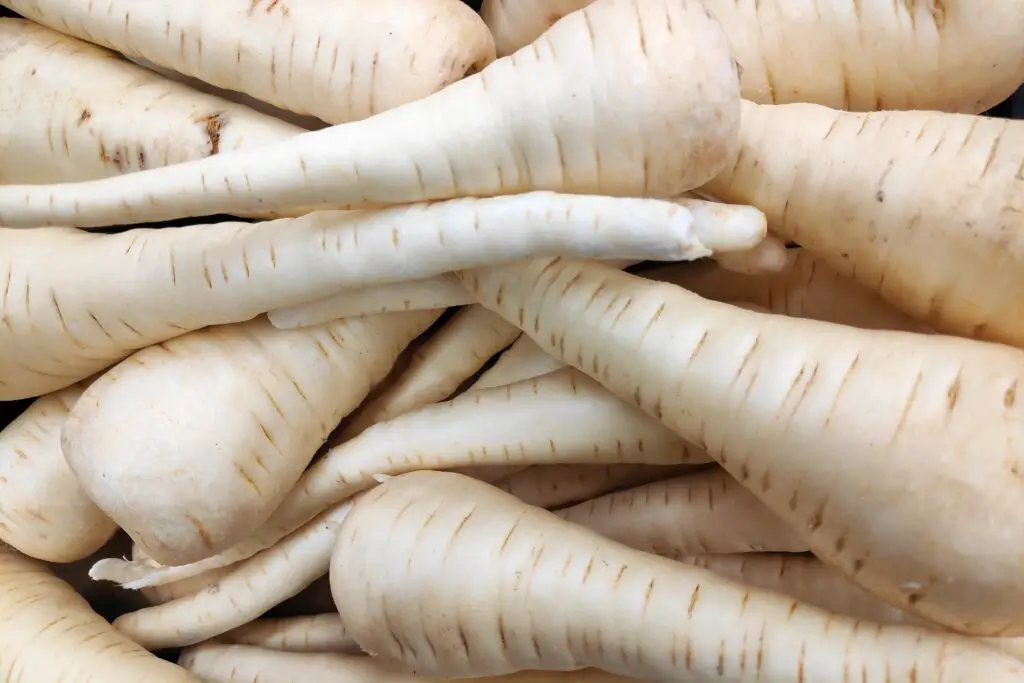
Bananas were nearly impossible to come by during the war, so British cooks got crafty. They discovered that mashed, boiled parsnips—sweetened and flavored just right—could almost pass as banana. By adding a little banana essence or a hint of lemon juice, the mixture could be used in sandwiches, puddings, or even as baby food. It was an odd swap, but when you hadn’t seen a real banana in years, it did the trick.
Kids were often told it was banana and didn’t know any better until long after the war ended. The texture was close, and the sweet flavor helped bring a bit of joy to the table. Some people even used it as a pie filling or topping for toast. It was one of those culinary illusions that people got surprisingly good at pulling off. Parsnips might not be tropical, but they became a source of comfort nonetheless. It’s amazing how far a little creativity—and a lot of imagination—can go.
9. Sheep’s Head Stew
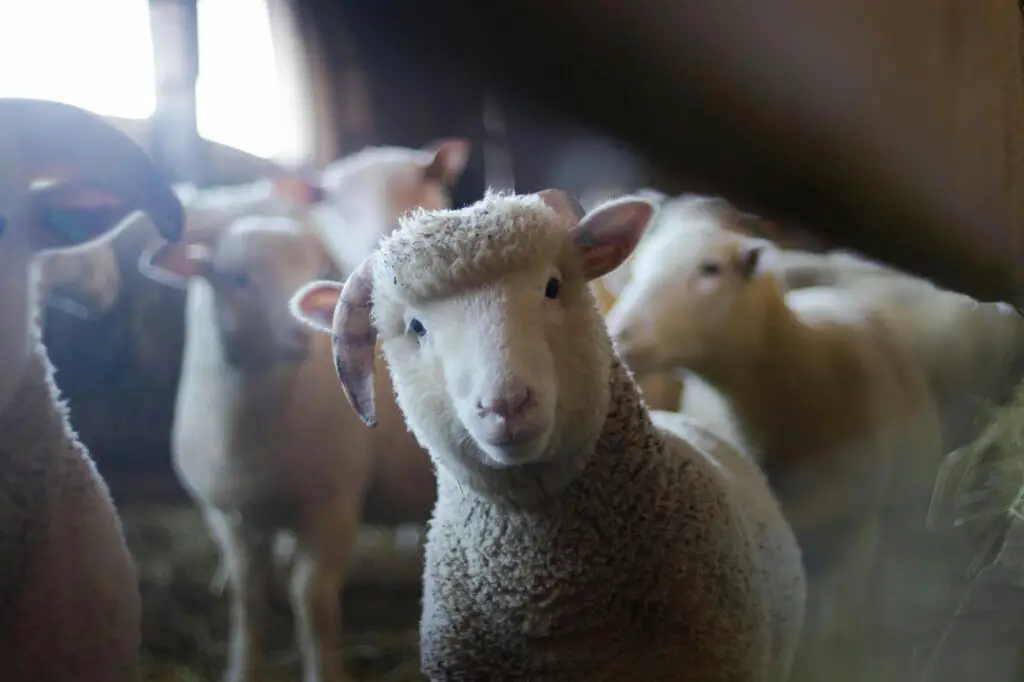
This one isn’t for the faint of heart. Sheep’s head stew was exactly what it sounds like, and yes, the head was often cooked whole, then the meat scraped off for stew. It was boiled for hours to create a rich broth, and nothing was wasted—not even the cheeks or tongue. Some folks even served it with the skull still intact, eyes and all, which could be quite the shock at dinnertime.
Still, it was full of flavor and nutrients, and during a time when meat was hard to come by, it was a blessing. The stew was usually bulked up with barley, onions, or turnips. It had a gamey taste and a strong smell, but people grew used to it. Families often said grace before eating, thankful for every part of the animal. For those who grew up on it, sheep’s head stew was a symbol of survival. And for better or worse, it stuck in their memory forever.
10. Ration Cake
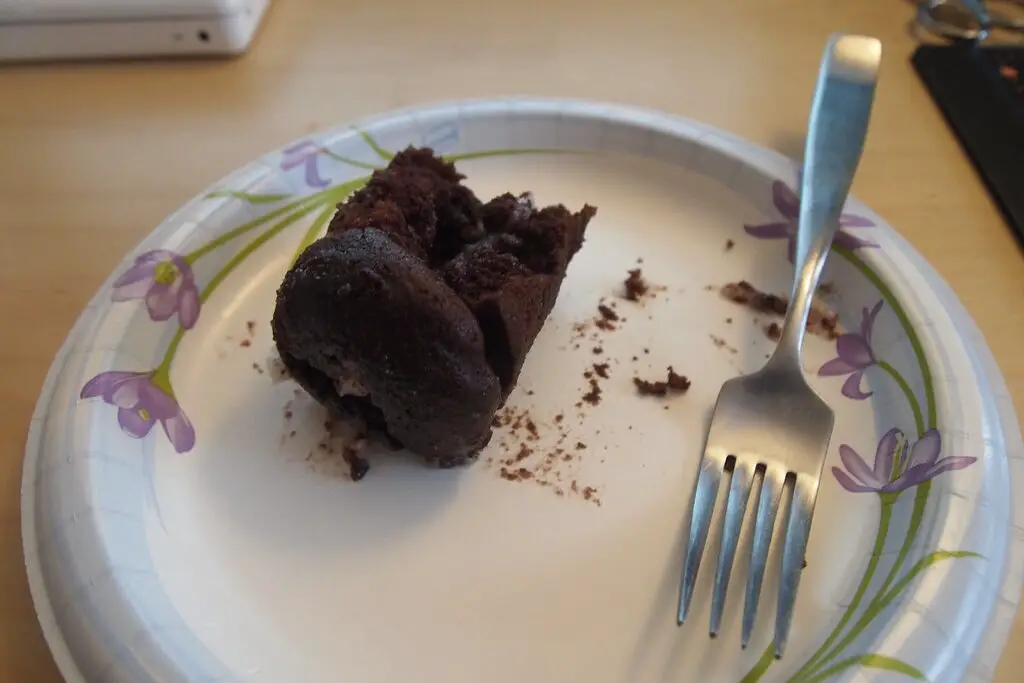
Baking during the war took a lot of ingenuity. Without eggs, butter, or milk, people had to rely on alternatives to make cakes rise and taste sweet. Ration cake used vinegar and baking soda for leavening and mashed veggies like carrots or beets to keep it moist. Sugar was precious, so it was used sparingly—if at all—and cocoa or raisins were rare treats to include when available.
Despite the limitations, ration cakes were often served for birthdays or holidays, dressed up as much as possible to feel festive. Some recipes were handed down from mother to daughter and adjusted as ingredients became more or less available. Kids loved the idea of cake, even if it wasn’t fluffy or rich. The point wasn’t perfection, it was celebration. In the middle of a difficult time, a slice of something sweet made a big difference. And people learned that love could be baked right into a humble cake pan.
11. Oxtail and Root Vegetable Soup
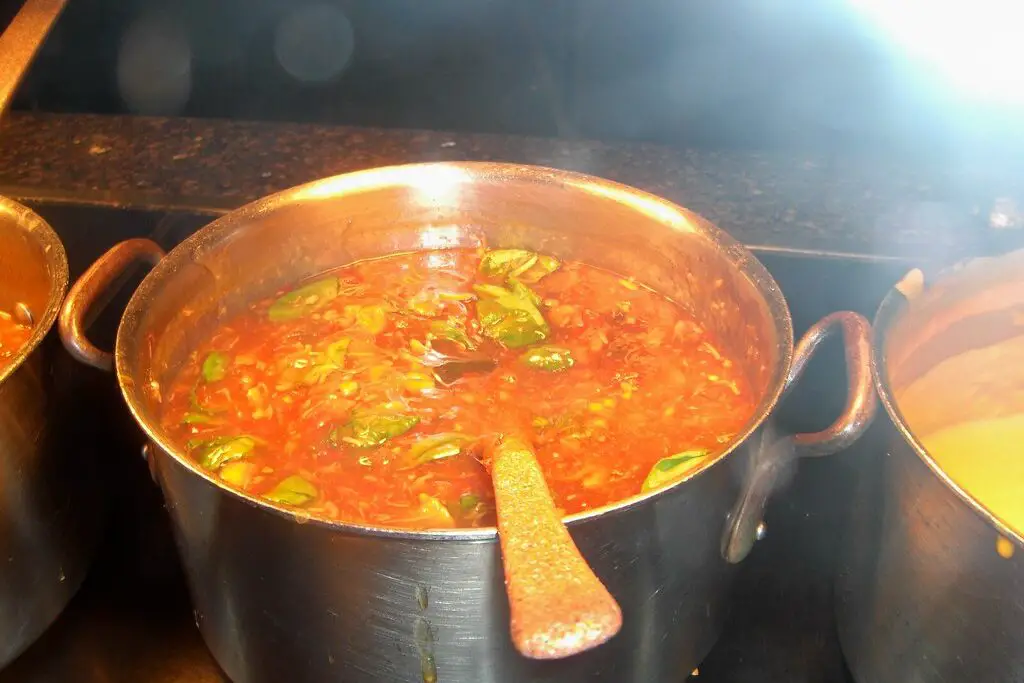
Oxtail, once an overlooked cut, became a staple for wartime soups and stews. When simmered for hours, the bones released collagen and flavor that turned simple root vegetables into a hearty, comforting meal. Carrots, onions, and potatoes were common additions, and if you had a bit of barley or lentils, all the better. It was a way to stretch a small amount of meat into something that could feed a whole family.
The soup smelled amazing while it cooked, and people would crowd the table hoping for the ladle with a piece of actual meat. It wasn’t glamorous, but it stuck to your ribs. Many remembered this as one of the more “luxurious” wartime dishes, especially in winter. It warmed cold fingers and filled empty stomachs. In some families, it became a recipe that lived on long after rationing ended. Not because it was needed, but because it was loved.
12. Whale Meat

During the war, when traditional meats were in short supply, whale meat entered the scene in places like the U.K. It was dark, oily, and had a strong, fishy flavor that not everyone appreciated. Governments promoted it as nutritious and patriotic, encouraging citizens to give it a try. It was usually served grilled or stewed with heavy sauces to mask the taste.
Most people weren’t thrilled about it, but they ate it anyway, knowing it was one of the few proteins available. Whale meat was served in school lunches, workplace canteens, and even at home, reluctantly. Some compared it to a tough beef steak that had been dragged through the ocean. It disappeared quickly after the war, with few mourning its loss. But for many, it’s remembered as one of the strangest things ever found on their plates.
13. Bread and Apple Pudding
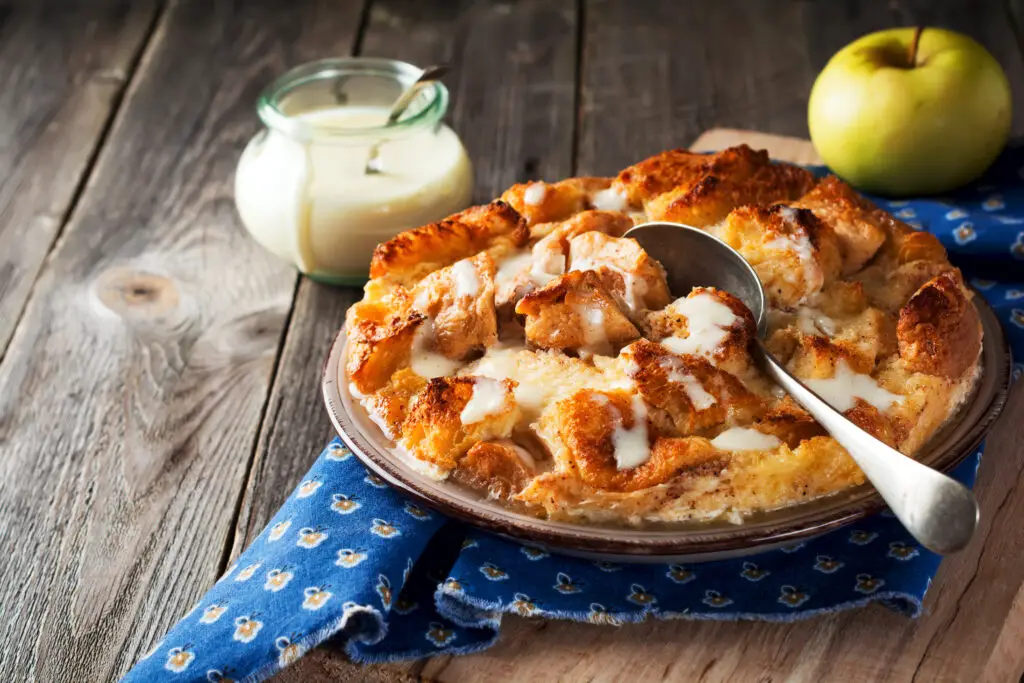
When dessert options were nearly nonexistent, people turned to what they had—often stale bread and a few bruised apples. Bread and apple pudding became a go-to recipe, layering slices of bread with thinly cut apples, sugar, and sometimes cinnamon if it was around. Water or tea was poured over the dish to moisten it before baking. It came out soft and sweet, a humble end to a hard day’s meal.
Kids often looked forward to it, especially if it was served warm with a dollop of “mock cream” made from margarine. The dish reminded people of better times, even if it wasn’t quite the same as pre-war desserts. It was made with love and care, which made it special. Parents did what they could to keep spirits high, even if that meant turning leftovers into something tasty. This pudding became a cherished part of the wartime kitchen. And for many, it still tastes like home.
